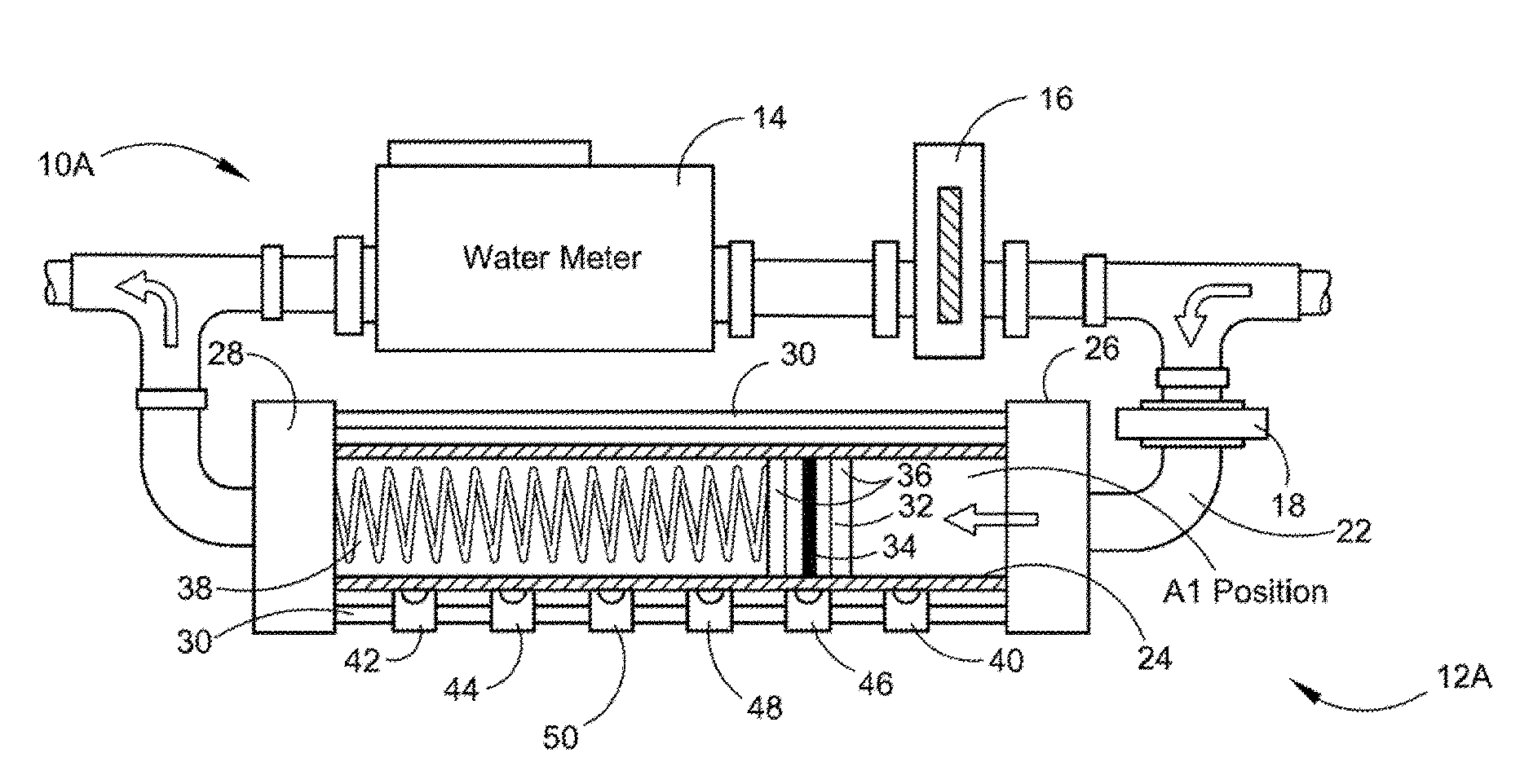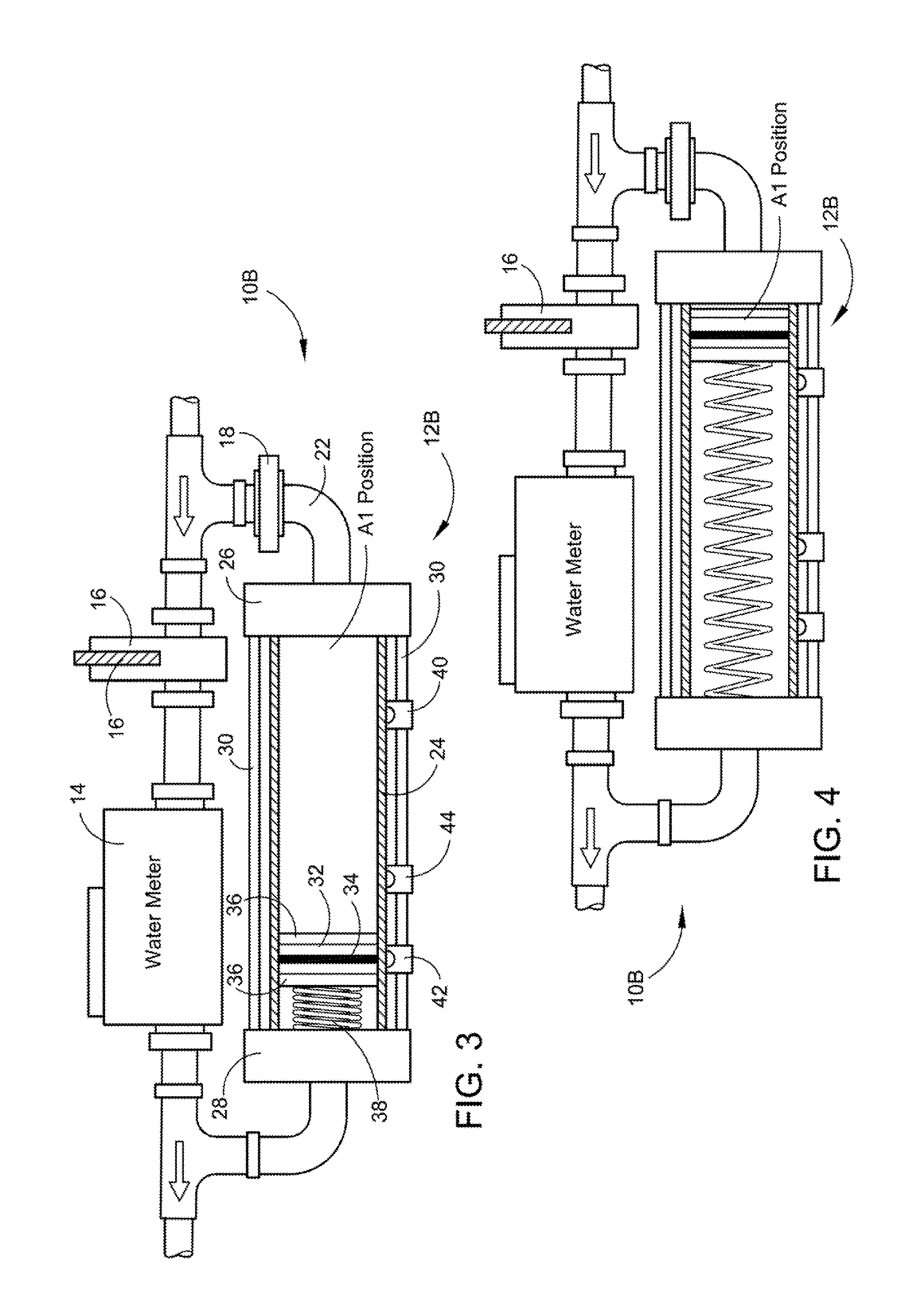Positive displacement metering system
a metering system and displacement technology, applied in the direction of volume metering, liquid/fluent solid measurement, instruments, etc., can solve the problems of inability to detect small flow, inability to accurately measure the flow rate of water, and limitations of meters,
- Summary
- Abstract
- Description
- Claims
- Application Information
AI Technical Summary
Benefits of technology
Problems solved by technology
Method used
Image
Examples
example 1
A Leaking Faucet Inside the Property being Monitored
[0321]With reference to FIG. 14A, as soon as the leak begins, Piston 32 will move away from the A1 position. The water in front of the piston is feeding the leak. When the piston reaches S1, a timer begins, this is the start of T1 time. 15 minutes later, Piston 32, reaches S2, and T1 time stops. T1 time is now equal to 15 minutes. With reference to FIG. 14B, note that the T1 time of 15 minutes falls between the X value of 30 seconds and the Y value of 24 minutes. Therefore Small Leak logic will be assigned to this water event.
example 2
A Faucet Inside the Property being Monitored is Opened
[0322]With reference to FIG. 14A, as soon as the faucet is opened and water begins flowing, Piston 32 immediately moves off of A1. When the piston reaches S1, T1 time begins, 6 seconds pass and the piston reaches S2. T1 time is now equal to 6 seconds. With reference to FIG. 14B, note that the T1 time of 6 seconds is less than the value of X, 30 seconds. Therefore Standard Use logic will be assigned to this water event. At this point, the PV will open, and T2 time will begin.
example 3
A Leaking Faucet Inside the Property being Monitored is Opened
[0323]With reference to FIG. 14A, as soon as the leak begins, Piston 32 will move away from the A1 position. The water in front of the piston is feeding the leak. When the piston reaches S1, T1 time will begin. 5 minutes pass and the piston is halfway between S1 and S2, at this point, the leaking faucet is opened, and the piston immediately moves from its present position to S2 and produces a T1 time of 5 minutes and 3 seconds. With reference to FIG. 14B, notice that a T1 time of 5 min 3 seconds falls inside of the Small Leak logic sequence, but we know this is incorrect, as the leaking faucet was opened, hence Standard Use logic must apply. When we look at the OR1 sensor, we see that it measured a time value less than 2 seconds, and therefore, the T1 time value of 5 min and 3 seconds will be overridden by OR1 time. Now Standard Use logic will be assigned to this water event, rather than Small Leak logic, as OR1 time was ...
PUM
 Login to View More
Login to View More Abstract
Description
Claims
Application Information
 Login to View More
Login to View More - R&D
- Intellectual Property
- Life Sciences
- Materials
- Tech Scout
- Unparalleled Data Quality
- Higher Quality Content
- 60% Fewer Hallucinations
Browse by: Latest US Patents, China's latest patents, Technical Efficacy Thesaurus, Application Domain, Technology Topic, Popular Technical Reports.
© 2025 PatSnap. All rights reserved.Legal|Privacy policy|Modern Slavery Act Transparency Statement|Sitemap|About US| Contact US: help@patsnap.com



